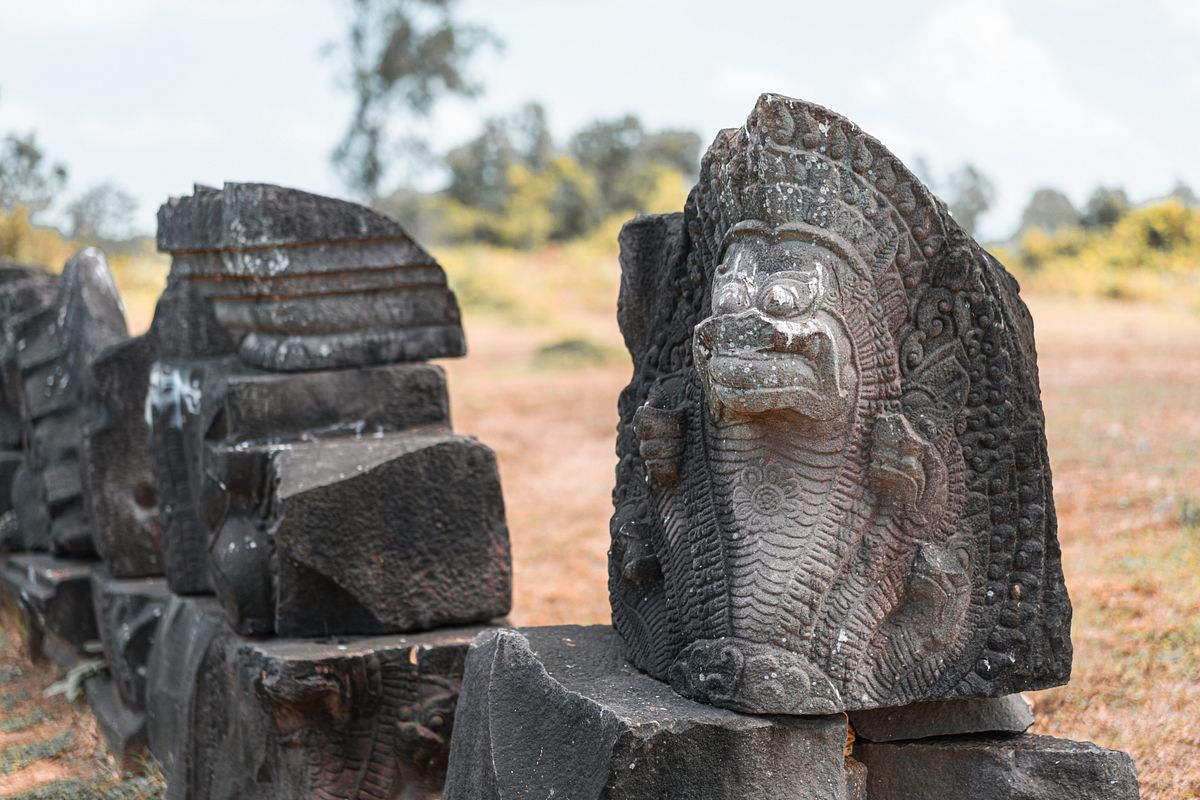What if memories were not collections of chemicals and electrical impulses stored in the fleshy recesses of a mind, but physical objects made of brick and stone?
They too would disintegrate over time, crumble into dust and dirt, but they would at least last longer than the first-hand accounts that disappear from the Earth upon a person’s death. So it is with Bình Định Province’s many Chăm ruins.

While Đại Việt was thriving to the north, and the Khmer Empire was constructing Angkor Wat to the west, what is now southern Vietnam was ruled by the Champa. The seafaring empire of loosely connected principalities existed in the area from the 2nd century until the 19th, peaking in power from the 10th–15th centuries. Today, approximately 800,000 of their descendants remain, with fewer than 200,000 living in Vietnam.
Chăm culture was inspired by, and in turn influenced, empires across the continent, including those in Cambodia, India and Vietnam. While not many people may encounter their descendants, let alone recognize their unique legacy of music, art and language, it is nearly impossible to avoid their architecture when traveling around Vietnam.

Perhaps the most prominent Chăm remnants in Vietnam are in Mỹ Sơn, the large UNESCO-recognized religious site in Quảng Nam Province that was constructed between the 4th and 14th Centuries. One of the largest Hindu complexes in Southeast Asia, the collection of 70 tombs and temples served a variety of religious purposes, as well as an important cultural center. While it suffered great and cruel damage during the American War, it continues to provide insight into the religious practices of the culture.
But several hundred kilometers to the south rest additional Chăm architectural relics. Until being conquered in 1471 by Vietnamese forces, Bình Định was an important hub for the empire, and several large buildings for defensive, religious and cultural purposes remain. Saigoneer ventured into the countryside earlier this year to observe.

While downtown Quy Nhơn contains the Tháp Đôi, or “Twin Towers,” which are worth a visit during any stay in the city, we were curious to see what we could find by traveling away from the coast, weaving through rice fields and small villages en route to the tremendous museum dedicated to the Tây Sơn brothers. Thus, one morning this past spring we traveled to Tháp Chăm Bánh Ít, about 15 kilometers outside of the city via Highway 1.

Built at the end of the 11th century, Tháp Chăm Bánh Ít, which is part of four hillside-perched towers, reflects Cham architecture while it was undergoing a transition in styles as regional influences shifted. While any contained treasures have long since been removed, including looting efforts by the French, some indicators of their past remain, such as Shiva sculptures atop each of the four towers. Leaf and flower motifs are carved into the red brick, and the large Sanctuary Tower features unique double-groove pilasters. Believed to have been an important religious site during the reign of the Chăm, Buddhists continue to gather there on various holidays.

Restoration efforts have been able to reinforce the redbrick and ensure the towers remain. From atop the largest peak on the horizon, one gets a beautiful view of the countryside in the distance. It is easy to think of Vietnamese rural life as a monolith, and while agrarian lifestyles may have been similar during the Chăm period, it is interesting to ruminate that in the shadows of the great complexes, people not so long ago spoke another language, worshiped other gods and had different notions of nationality.


As the sun continued to rise, we ventured on to the Dương Long Towers further into the center of the province. With the wonders of Google, we got close enough to see the three red structures rising in the distance. After promising the security guard on duty that we wouldn’t stay so long as to interrupt his lunch break, we walked in.

Built in the late 12th and early 13th centuries, about 40 kilometers outside Quy Nhon, the largest of the three east-facing towers measures 24 meters. Because the stones are in a general state of disrepair, guests are instructed not to approach too closely. However, past research suggests the work contains a variety of plant, animal and human reliefs not beholden to any specific iconography. The time when they were erected and the style suggest they were built in response to a significant influence from the nearby Khmer regime.

Lotus leaves opening to the sun cover the top of each of the three Dương Long towers. While somewhat visual from the ground, it really took taking our camera to the skies to appreciate them. Such a fact makes one wonder who the structures were even built for. When constructed, it's not any less likely that the Chăm could have predicted cameras mounted on motorized wings than the end to their empire. It is only in our modern day that we can get another view, another context, another understanding of the impermanence of civilizations. It is not the height or size that should make viewers feel small, but rather the way the towers have endured that reminds us of how insignificant our place in history truly is.
















